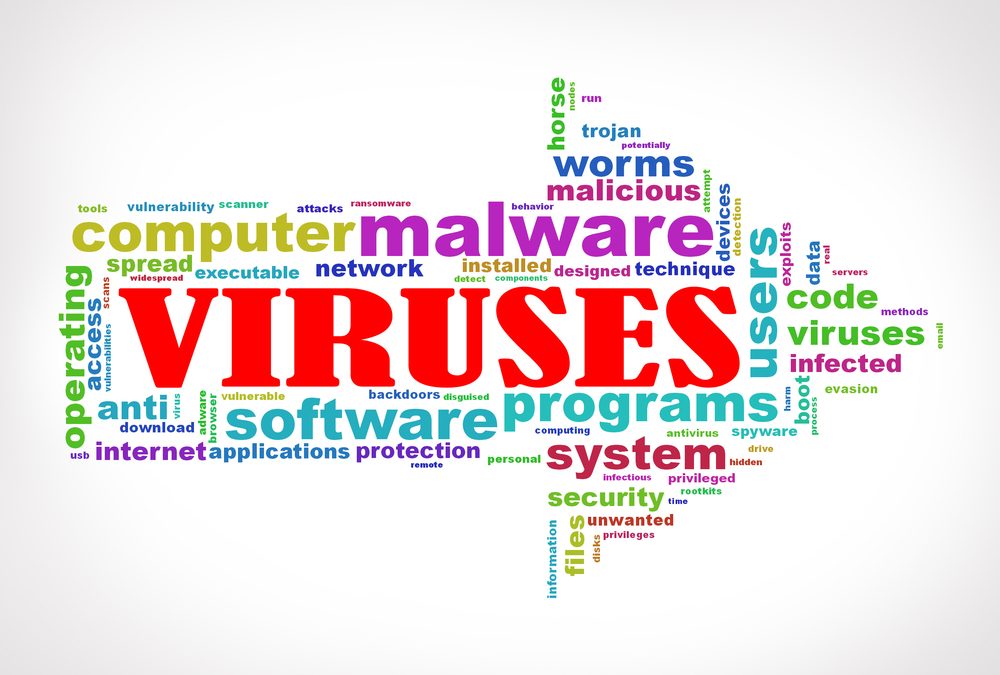You may often wonder, what is the difference between malware and viruses? These words are thrown around so loosely, but actually have their own meanings. It’s important to know malware vs. spyware, virus vs. malware, and so on, in case you ever get attacked.
What is Malware?
The difference between malware and viruses is not that significant. All viruses are malware, but not all malware is a virus. This is because malware is a broad reaching term that describes many types of computer infections. The term malware can be used to describe any malicious software that is specifically created to attack a computer without the owner’s consent or even knowledge. Malware ranges in degrees from simple adware to extremely dangerous and malicious ransomware.
The Most Common Types of Malware:
Viruses
Here is where the difference between malware and viruses lies. The malware virus definition is a piece of malicious code that enters your computer from a variety of possible ways. Once inside, the software will run itself and spread over hundreds or thousands of your computer’s files. It acts much like a virus in a human body does. Because it spreads so quickly, a virus is hard to remove. Once your computer is infected, it can infect the other computers that it comes in contact with, hence the name virus. Viruses are not as common today as they once were. Hackers now resort to more effective ways of infecting computers.
Adware
Adware is unique in that it does not always have to be malicious. Many computers come prepackaged with adware already installed by the manufacturer. However, adware can also be placed onto your computer by hackers. The goal is to bombard you with ads until you purchase their product.
Spyware
There is not a big difference in malware vs. spyware. But, while you should be worried about the difference between malware and viruses, spyware presents a bigger danger. Spyware is a type of covert program that runs in the background without you or your computer knowing. It tracks your movements and attempts to gather information that you enter, such as banking and credit card information.
Worms
Like viruses, worms are not as common today as they used to be. They are similar in operation to viruses as well. Worms enter your computer and spread across your files, sometimes destroying them as they go. They usually have no real purpose besides to damage your computer. Recently, antivirus companies have been so effective in battling worms and viruses, that many hackers simply gave up. Although, if you forget to update your computer, you are vulnerable.
Trojans
The difference between malware and viruses is often how they enter your computer. Named after the famous Trojan Horse, a Trojan masks itself as a safe program, but in reality is a vessel for malicious software. The user downloads the program expecting to get a music file, for example. Before they know it, they are infected. Because the user directly installs the program, Trojans are one of the most effective ways of getting malicious software onto a computer.
Ransomware
Ransomware is the worst of all the types of malware. If the difference between malware and viruses is subtle, ransomware stands all on its own. Ransomware can enter your computer through a number a different ways, including Trojans. Once inside, the ransomware will lock your computer rendering it useless to you. The program will then demand a large payment to gain control of your computer. While many people simply take the loss and clear their systems, many companies have become targets of ransomware. These companies can be forced to pay out thousands of dollars to cyber criminals if they don’t have proper backups.
In the unfortunate event you get attacked by malicious software, you can now immediately start to solve the problem. Time wasted looking up the difference between malware and viruses is time that the program can use to further spread on your computer.


